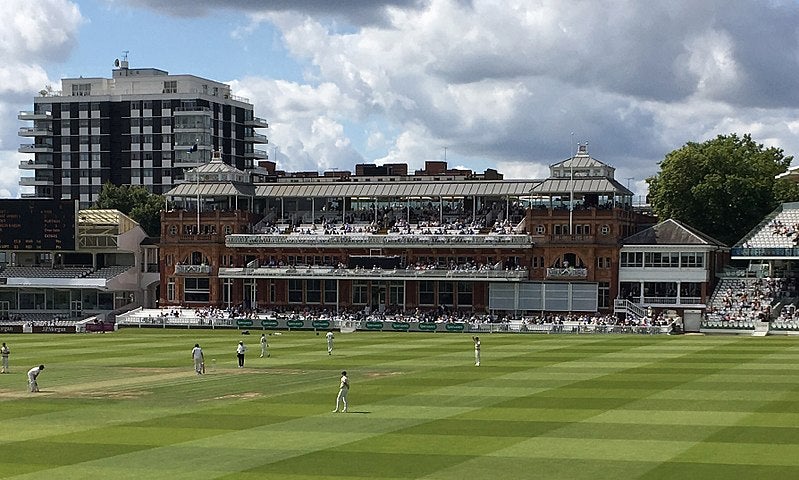
The Cricket World Cup is currently underway in England and Wales for the first time since 1999. Six weeks of cricket will conclude with the final at Lords on Sunday 14 July.
The tournament will take place in 11 venues across the country, from Lords in London to Old Trafford in Manchester. But how green is the energy these stadiums use? Power Technology reviews the renewable energy policies of these grounds.
Lords
The spiritual home of cricket in St Johns Wood, London, the current version of Lord’s has been in existence since 1814.
As part of its sustainability pledge, the ground moved towards having 100% of its energy sourced from renewables in October 2016. The following year it announced it would get its energy entirely from wind power, using the London Array offshore windfarm in the Thames Estuary, the second largest offshore windfarm in the world. This has helped the ground reduce its carbon footprint by 80%.
Steeped in history with its legendary honours board, for batsmen who reach centuries and bowlers who take five or more wickets, and the MCC Museum, Lord’s has one foot firmly in the future with its renewable energy policy.
The Oval
Also in London and home of current county champions Surrey, the Oval is where England traditionally play the last test of the summer.
The Oval made the switch to renewable energy in April 2018. It signed a deal with Fidelity Energy and French company ENGIE to supply the ground in a deal that will last until 2022. This move will save the ground a total of 6,252 tonnes of CO2 per year.
With a current capacity of 25,500 thanks to the magnificent OCS stand, the Oval will eventually expand to 40,000, making it the largest cricket ground in England.
Edgbaston
Edgbaston is home of Warwickshire County Cricket Club, and in December 2018, Warwickshire signed a two year deal with Haven Energy to ensure that its energy comes from renewable sources.
Haven has installed solar panels, battery storage and electric vehicle (EV) charging points at its head office, and the company also hopes to install further charge points at its entrances and car. This in order to meet Warwickshire’s goal of being the most sustainable cricket ground in England.
Edgbaston has seen its fair share of memorable moments; in the summer of 1994, Brian Lara hit 501 not out against Durham, setting a world record that is unlikely to be beaten. It was also the scene of the closest test match in Ashes history in 2005, as England beat Australia by two runs on a tense Sunday morning. Edgbaston’s sustainability targets could be the new record to beat.
Old Trafford Cricket Ground
Boasting the same name as the home of Manchester United, Old Trafford is the home of Lancashire County Cricket Club.
As part of its recent redevelopment, Lancashire committed to incorporating environmentally-friendly features through its architects BDP. Alongside harvesting rainwater and recycling, the ground is powered by solar panels on its roof to power the facilities. The club was awarded gold certification by the Green Tourism Business Scheme (GTBS), particularly for its work on The Point extension on its pavilion.
England’s leading test wicket taker James Anderson and iconic all-rounder and Top Gear presenter Andrew Flintoff can rest easy knowing their Old Trafford home has such green credentials.
Bristol County Ground
Bristol County Ground is the home of Gloucestershire Country Cricket Club, which just before the start of the 2019 County Championship announced a partnership with local company Bristol Energy to supply the ground with 100% renewable energy. The company buys its electricity from renewable generators in the UK and uses the Green Plus plan to replace units used on the national grid with certified green units.
Bristol can claim to be one of the most important sites in English cricket. It was here from 1889 onwards that Gloucestershire made their home thanks to the generosity of W.G Grace, who bought the ground at his own expense thanks to him being the most iconic and well-paid sportsperson of the Victorian era. It is now making its mark on history as an eco-friendly icon.
The World Cup of green energy
In the Cricket World Cup, England are the favourites having dominated one day cricket with some big scores in recent years, but they face stiff competition from India, who boast the world’s best one day batsman Virat Kohli and bowler in Jasprit Bumrah. It will also be an opportunity to see the iconic opening batsman Chris ‘Universe Boss’ Gayle of the West Indies for the last time, as the big hitter will retire after the tournament. But what can be guaranteed is that the stadiums are hitting renewable energy targets for six.



